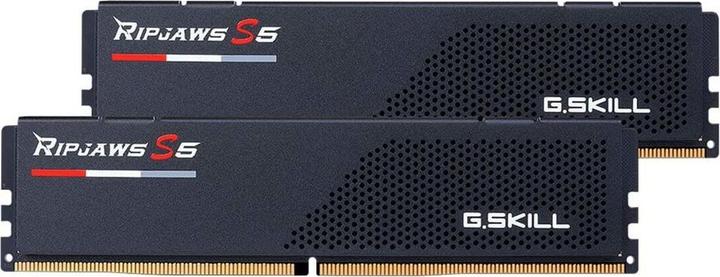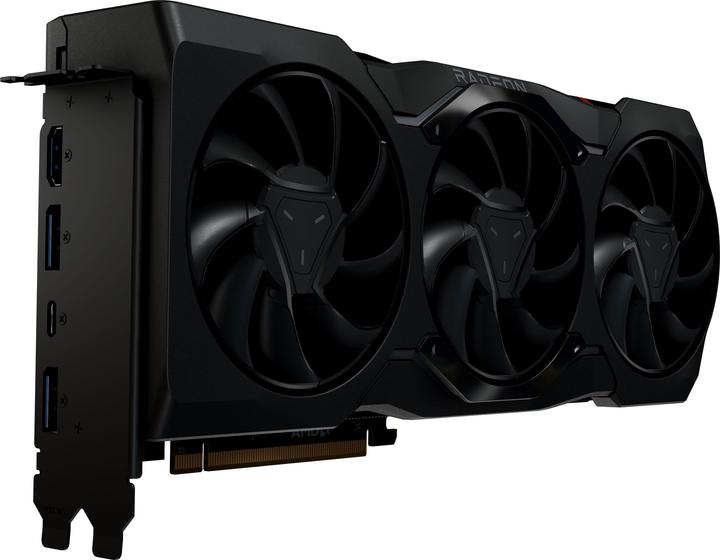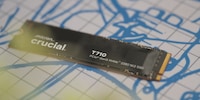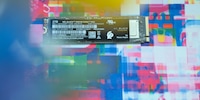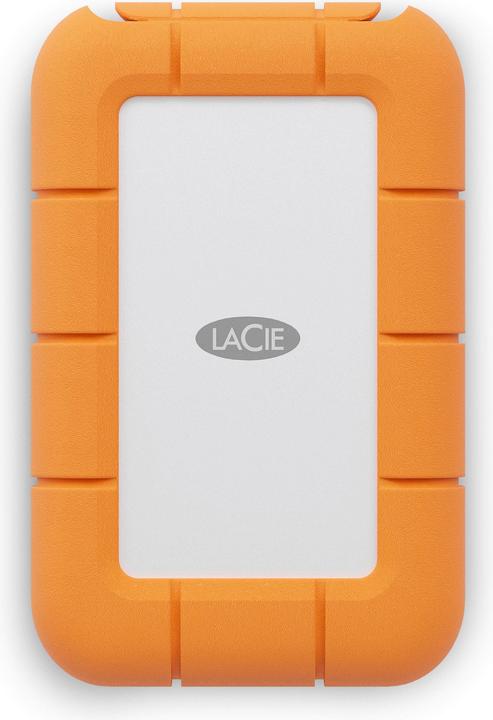

The basketball SSD tested: Lacie Rugged Mini
The iconic external drive is now also available with USB 3.2 Gen2x2. The Lacie Rugged Mini can keep up with the competition when tested, but still doesn't fully convince me.
The external drives from Lacie are instantly recognisable thanks to their orange shock absorbers. The devices have this colour because of a basketball. Designer Neil Poulton wanted to make the SSD as durable as a basketball and therefore chose the colour of the leather. The manufacturer now has a version with USB 3.2 Gen2x2 standard on sale. This theoretically enables up to 2000 megabytes per second (MB/s). The Rugged Mini SSD almost utilises this bandwidth.

The Lacie Rugged Mini SSD in detail
At 10.5 × 6.7 × 1.7 centimetres, the Rugged Mini SSD is the most voluminous SSD I've held in my hands in the last year. It weighs 104 grams and is therefore slightly lighter than the T9 from Samsung despite its size.
The Rugged Mini SSD is encased in orange-coloured rubber and protected to IP54. This means that it is dust-proof and protected against splashing water from all sides. It is also said to be drop-proof from a height of up to three metres and pressure-resistant up to 1000 kilograms. Rugged is the name of the game with the SSD and, despite its size, it is aimed at anyone who is often on the move.
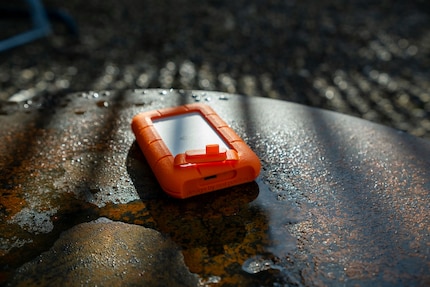
Source: Kevin Hofer
The Rugged Mini is available in storage sizes of 500 gigabytes (GB), 1, 2 and 4 terabytes (TB). For the test, the manufacturer provided me with the 1 TB model. Which controller Lacie uses is not specified. Nor which NAND memory. NAND is a non-volatile storage technology that does not require electricity to store data. The manufacturer also does not specify the interface or protocol. It simply says "SSD". The CrystalDiskMark programme gives me UASP (Serial ATA) for the interface. The SSD is therefore connected via SATA. Thanks to UASP, it achieves higher transfer rates than usual with SATA and can therefore make use of USB 3.2 Gen2x2.
To achieve the high speeds of the USB standard, your PC or notebook must also support it. Although Thunderbolt 3 or 4 are faster on paper, the transfer rates with the Rugged Mini would still only reach up to 1000 MB/s on such a connection. This is because USB 3.2 Gen2x2 transfers over two lanes and Thunderbolt 3 and 4 only over one.
Lacie specifies up to 2000 megabytes per second (MB/s) for read data transfer. There is no information on the write speed in the data sheet. I use various benchmarks to determine whether this information corresponds to reality. I do this on my testbench with the following components:
Windows is running version 23H2 (22631.3085).
Writing data: Not quite as fast due to the older standard
To test the performance of the SSD in real-life scenarios, I copy various files from the system drive to the Rugged Mini SSD.
First up is a 101 GB file folder with MP4, RAW photos and a Premiere Pro project - I write a total of 60 files. The Rugged Mini writes the data at an average speed of 850 MB/s. This puts it behind all other external SSDs in the USB 3.2 Gen2x2 standard that I have tested so far. This is due to the SATA protocol. The other SSDs use the faster NVMe protocol.
In the second test, I write a file folder of almost ten GB with MTS, MP4, MP3, MOV and JPEG files as well as another Premiere project - a total of 100 files. At 830 MB/s, the Rugged Mini is closer to the other SSDs, which record greater losses, and even achieves a better result than the T9 from Samsung. The Rugged Mini seems to have strengths in random writing.
The Rugged Mini confirms this impression in the last write test. The almost four GB file folder contains more than 160 photos in RAW format. Here the SSD is even in first place. The difference between sequential and random writing is significantly less with the Lacie SSD than with the competition.
When the external drive is not in use, the Crystal Disk Info software shows me a temperature of 30 degrees Celsius. During the transfer of the 101 GB folder, the temperature rises to 40 degrees Celsius. Externally, the Lacie SSD remains pleasantly cool.
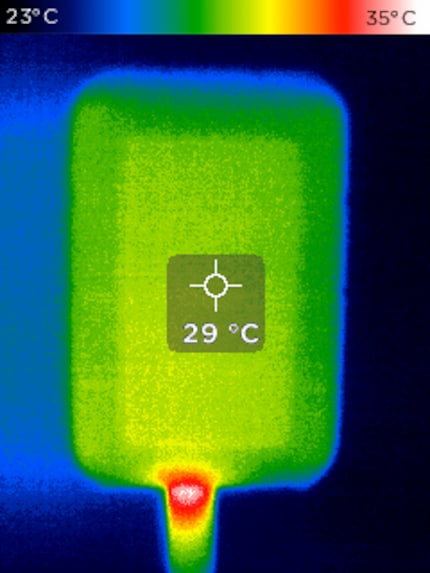
Source: Kevin Hofer
I also always test the amount of data above which an SSD throttles down the write speed. To do this, I copy the 101 GB file folder to the SSD several times. After just over 300 GB of transferred data, i.e. a third of the available storage space, the SSD throttles down the speed. Instead of the 850 MB/s, the speed of the data transfer is only around 140 MB/s.
I attribute this drop to the single-level cell mode (SLC mode). SSDs use this because it is faster. Instead of using all level cells of the NAND, they only write to the first one first. Only when the write process is complete do they transfer the data to the others in the background. Based on the memory size of my test sample of 1 TB, I suspect that Lacie uses so-called TLC NAND. TLC stands for "Triple Level Cell". This means that 3 bits are possible per memory cell - this is the most common design.
Copying data: The Rugged Mini keeps up
To test how fast the SSD is when copying data (read and write), I duplicate the 101 GB folder on the Rugged Mini. At 620 MB/s, the Lacie is similar to the fastest SSDs I have tested.
Reading and writing data in theory: neck-and-neck race
Unfortunately, I don't have my own test to determine the read speed. That's why I have to rely on the CrystalDiskMark benchmark.
The test shows: The Rugged Mini also achieves good values in reading compared to the competition. However, as the test is not very practical, I will run further benchmarks for office and gaming applications.
Office: Also plays in the lead here
I tested the performance of external SSDs for the office with the Quick System Benchmark from PCMark 10.
Here too, Rugged Mini performs similarly to the competition. It only falls slightly short in terms of latency.
Gaming: The weak point
With the speed of today's external drives, storing your game collection on one is a good option. I test how well an external SSD is suitable for this with the 3DMark Storage benchmark.
As you can see from the graphs, the Lacie performs worst in seven out of nine tests. Does that make it unsuitable for storing your game collection? No, its speed is also perfectly adequate. You may need a little more patience compared to others, but the performance is still good enough.
Everything again with 80 per cent occupied memory
I have done all the tests so far with an empty level. As a rule, however, your SSD is not empty and the speeds are lower the more storage space is occupied. That's why I'm doing some benchmarks again at 80 per cent full and showing you the results in the following graphics.
The write speed suffers enormously at a higher fill level. When writing, the original 850 MB/s are still possible at the beginning of the data transfer. However, the write speed drops to around 140 MB/s after around 65 GB of written data. The SLC mode is probably exhausted.
When copying, only 140 MB/s are possible right from the start. The SSD also loses in the other benchmarks, albeit significantly less. This is due to the fact that little changes in the read speed and the Rugged Mini can therefore compensate for the poor write score.
Conclusion: Good, but nothing more
The Rugged Mini SSD is a solid external SSD with USB 3.2 Gen2x2 standard. It makes good use of the theoretically possible read bandwidth of 2000 MB/s - despite the old SATA protocol. Compared to the other SSDs tested, it impresses with its durability. Although the Crucial X10 and the SanDisk Extreme Pro can also keep up, they are smaller and use a newer standard with the NVMe protocol.
Personally, I would still prefer the Crucial X10 to the Rugged Mini SSD. Above all, because with a fill level of 80 per cent, there is significantly less loss of performance. I would only recommend the Lacie if you like the basketball design.
[Header image: Kevin Hofer]]
From big data to big brother, Cyborgs to Sci-Fi. All aspects of technology and society fascinate me.



